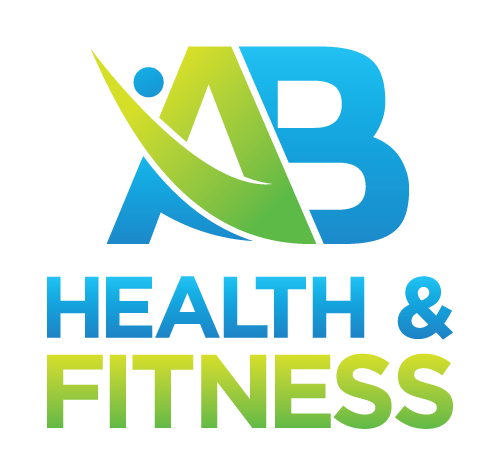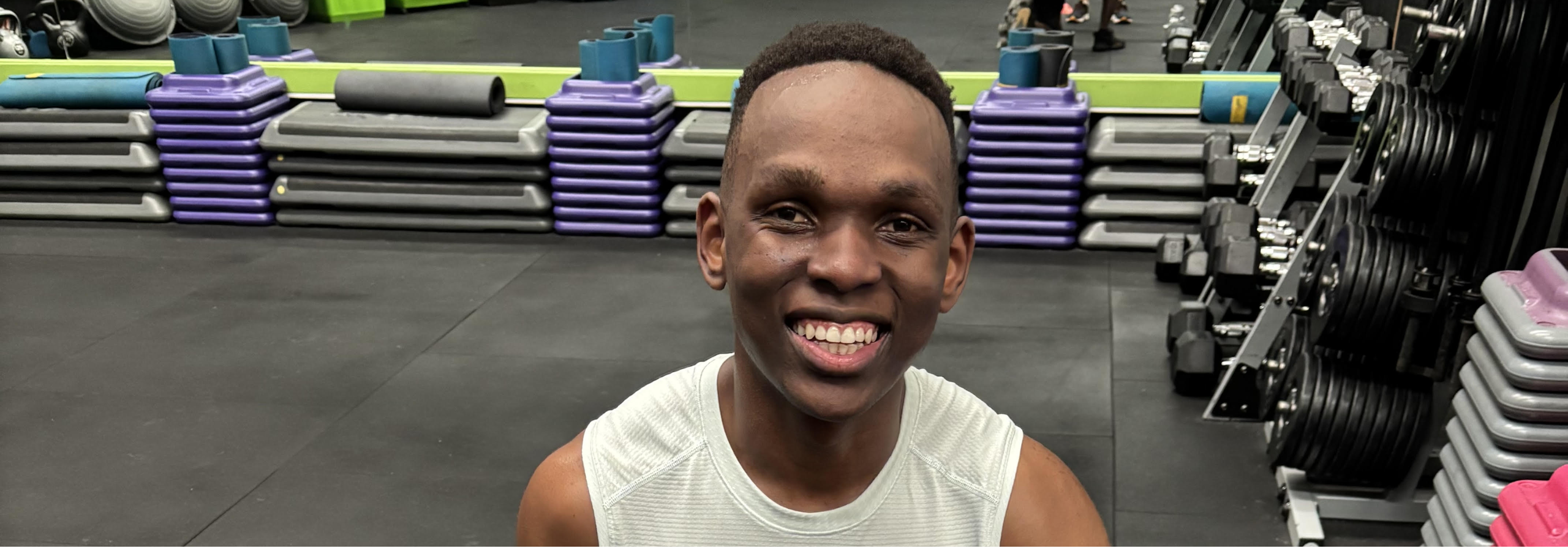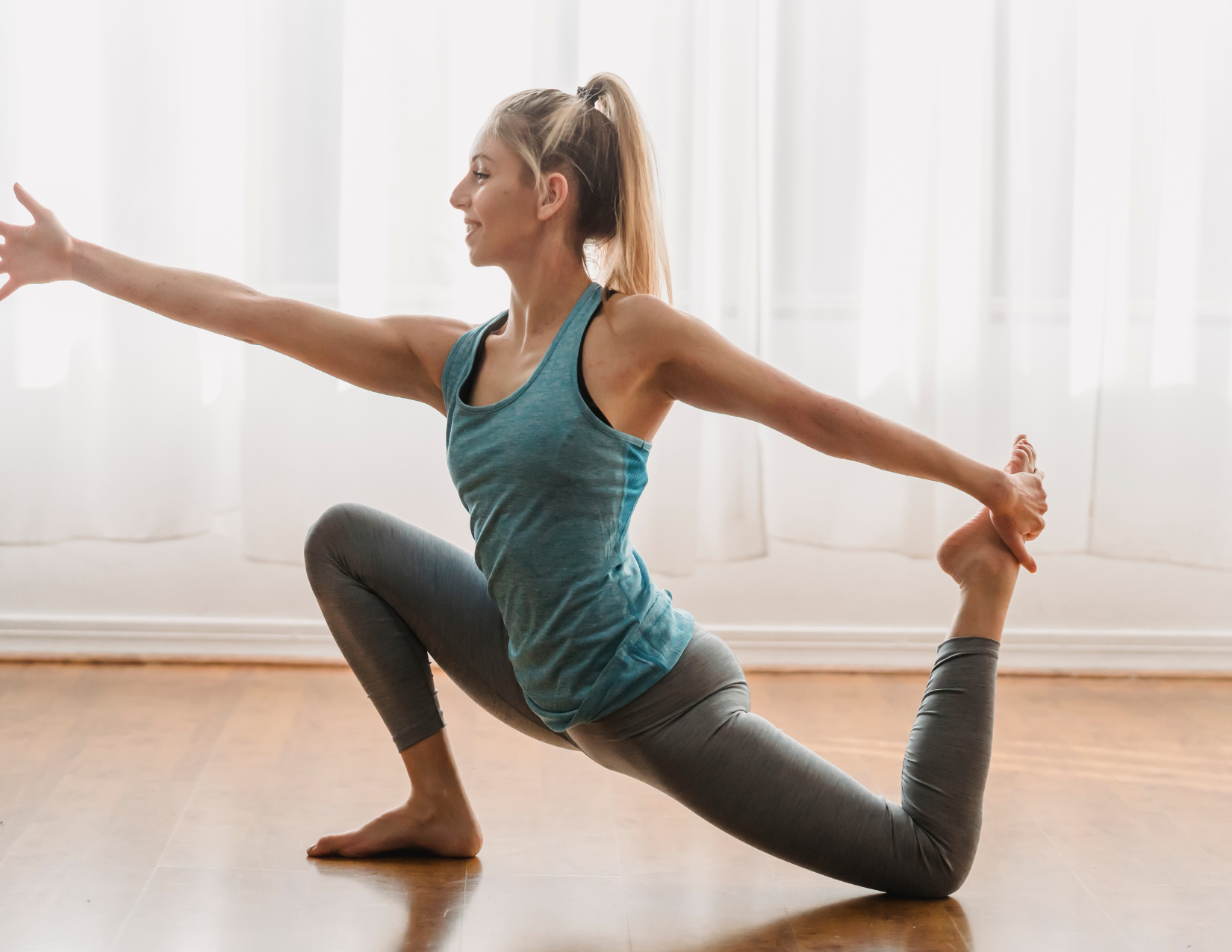Discover how Rocco, our Member of the Week at AB Health & Fitness, overcame personal challenges and injury to reclaim his fitness journey. His story of resilience, community support, and dedication serves as an inspiration to all.
Member of the Week: Andrew
Every week, we celebrate an incredible member of our AB community, and this week, it’s Andrew! Since joining in 2019, he has embodied strength, resilience, and humour. From recovering from a lower back injury to bench pressing 20kg with his right arm, Andrew’s journey is a testament to dedication and community support. He loves the Friday Iron-Strength class and finds joy in the connections he’s made. Discover how Andrew’s story highlights the importance of perseverance and belonging in achieving your fitness goals. Join us in celebrating his inspiring journey and learn how you can unlock your best self!
Hydration in Winter: Essential Tips to Stay Energized and Healthy
Cold temperatures can trick your body into thinking you need less water, but staying hydrated in winter is crucial for energy, immunity, and overall performance. Discover why hydration matters year-round and how to maintain optimal fluid intake during the colder months.
Fueling for Energy in Winter
Winter’s shorter, colder days can leave you feeling low on energy. But with the right nutrition, you can stay energized and active throughout the season.
Winter Slumps — Why They Happen and How to Beat Them
As winter rolls in, so does that familiar sluggish feeling. The days are shorter, the mornings colder, and suddenly, even the most motivated among us start hitting snooze more often. Sound familiar? You’re not alone. Why Do Winter Slumps Happen? There’s actually science behind that seasonal slump. Here are a few key reasons: Less Sunlight: Reduced daylight can disrupt your circadian rhythm, affecting mood and energy levels. Lower Vitamin D Levels: With less sun exposure, vitamin D drops—something that can impact motivation and immune health. Comfort Cravings: Cold weather makes it easier to opt for cozy comforts over movement. Disrupted Routines: Holidays, weather changes, and darker evenings can throw off your workout and wellness rhythm. How to Beat the Slump The good news? Winter doesn’t have to be a motivation killer. With a few mindful strategies, you can stay on track and even thrive through the season. 1. Stick to a Routine Keep your workout schedule consistent—even if it’s shorter or modified. Treat movement like a non-negotiable appointment. 2. Move First Thing Get it done early before distractions (or excuses) pile up. A brisk walk, a short strength session, or a stretch routine sets a positive tone for the day. 3. Layer Up and Get Outside Fresh air and sunlight—even in small doses—can do wonders. Dress warm and get moving outdoors when you can. 4. Fuel Smart Nourish your body with warm, whole foods that energize you. Think soups packed with veggies, lean proteins, and complex carbs. 5. Stay Accountable Join a group challenge, find a workout buddy, or check in with a coach. Accountability is a powerful motivator when willpower wanes. Remember: Progress, Not Perfection You don’t need to be perfect. You just need to keep showing up—even when it’s tough. Every walk, every healthy choice, every stretch session counts. So let winter come. You’ve got what it takes to move through it—energised, empowered, and strong.
The Role of Flexibility in Your Fitness Routine – AB Health and Fitness
Flexibility is often overlooked in many fitness routines, yet it plays a crucial role in overall health, performance, and injury prevention. At AB Health and Fitness, we emphasize the importance of incorporating flexibility exercises into your fitness plan, regardless of your fitness goals. Whether you’re training for a specific sport, focusing on general fitness, or aiming for weight loss, flexibility should be an essential part of your workout routine. Why Flexibility Matters Flexibility refers to the range of motion in your joints and muscles. It’s the ability of your muscles and tendons to stretch, allowing your body to move freely. Flexibility is essential for maintaining proper posture, avoiding muscle strain, and improving overall mobility. Here are some of the key benefits of improving flexibility: 1. Injury Prevention One of the biggest benefits of improving flexibility is its role in injury prevention. When your muscles are flexible, they can move more freely and are less likely to get injured during physical activity. Tight muscles are more prone to strains, sprains, and tears, especially during high-intensity workouts or sports. By including flexibility exercises like stretching or yoga into your routine, you can reduce the risk of these injuries. 2. Improved Posture Flexibility isn’t just about being able to touch your toes. It’s also about improving the alignment and mobility of your joints and muscles. When you improve your flexibility, you can also improve your posture. Tight muscles in the back, shoulders, or hips can pull your body out of alignment, leading to poor posture and discomfort. Regular stretching can help release these tight muscles and improve overall posture. 3. Better Performance Flexibility can directly impact your athletic performance. Many sports, such as running, swimming, and cycling, require a full range of motion in the joints to perform optimally. Flexibility training allows for smoother, more efficient movements, helping you to perform better in your workouts or competitions. It also enhances muscle coordination, which is important for both strength and endurance exercises. 4. Increased Blood Flow Stretching and flexibility exercises increase blood flow to your muscles and joints. Increased circulation helps supply muscles with oxygen and nutrients, which are necessary for recovery and muscle repair. This is especially important after intense workouts or when performing high-impact exercises. Enhanced blood flow can also reduce muscle soreness and speed up recovery time. 5. Reduced Muscle Tension After an intense workout or long day of physical activity, your muscles can become tense and fatigued. Stretching helps alleviate this tension, promoting relaxation and reducing discomfort. Incorporating flexibility exercises into your cool-down routine can help your body return to its baseline state after exertion, leading to less soreness and better recovery. Above is just some of the role of flexibility in your fitness routine. Do you find it helpful? Types of Flexibility Exercises There are different types of flexibility exercises you can incorporate into your routine to improve mobility and range of motion. Here are the most common types: 1. Static Stretching Static stretching involves holding a stretch for a period of time, typically between 20–30 seconds. This type of stretching helps lengthen the muscles and improve overall flexibility. Examples include stretching your hamstrings by touching your toes or holding a quad stretch by pulling your heel toward your glutes. 2. Dynamic Stretching Dynamic stretching involves moving parts of your body through a full range of motion, typically in a controlled manner. These stretches are usually performed before exercise to prepare your muscles for activity. Dynamic stretches include leg swings, hip circles, and walking lunges. Unlike static stretching, dynamic stretches are intended to warm up the muscles rather than increase flexibility. 3. Yoga and Pilates Yoga and Pilates are excellent ways to improve flexibility and balance. These practices incorporate a series of poses and stretches that increase flexibility while also building strength, stability, and mindfulness. Regular practice of yoga or Pilates can help improve both your physical and mental well-being, offering a holistic approach to fitness. How to Incorporate Flexibility Training Into Your Routine It’s important to make flexibility a regular part of your fitness routine, and there are many ways to do so: 1. Incorporate Dynamic Stretching Before Workouts Before your workout, incorporate dynamic stretching to warm up your muscles and prepare them for exercise. This helps improve mobility and prevents injury during your workout. Focus on areas that will be used the most, such as your legs, back, and shoulders. 2. Cool Down with Static Stretching After your workout, cool down by incorporating static stretches into your routine. Hold each stretch for 20–30 seconds to help lengthen your muscles and reduce muscle tension. This can be particularly beneficial after intense strength training or cardio sessions. 3. Include Yoga or Pilates in Your Weekly Schedule To improve flexibility over time, consider adding a yoga or Pilates session to your weekly schedule. These practices are great for enhancing both flexibility and strength and can be easily adapted to suit your fitness level. How AB Health and Fitness Can Help At AB Health and Fitness, we understand the importance of flexibility in achieving overall health and fitness goals. Our trainers are here to help you design a fitness plan that includes flexibility exercises tailored to your needs. Whether you’re training for a marathon, recovering from an injury, or just want to improve your range of motion, we can help you develop a balanced fitness routine that works for you. Ready to increase your flexibility and take your fitness to the next level? Visit AB Health and Fitness or call us at 03 8364 8984 to book a consultation today! How Flexible Are You? Do you make flexibility exercises a priority in your fitness routine? How has flexibility training benefited your workouts or overall health? Share your experiences in the comments below! Sources: Better Health Channel: Benefits of Stretching Health Direct Australia: Flexibility Exercises Australian Physiotherapy Association: Stretching and Flexibility
The Importance of Nutrition in Your Fitness Journey – AB Health and Fitness
Importance of Nutrition When it comes to fitness, exercise often takes the spotlight. While working out is essential for building strength, endurance, and overall health, nutrition plays an equally critical role in achieving fitness goals. At AB Health and Fitness, we emphasize that good nutrition is the foundation for a successful fitness routine. Whether you’re looking to build muscle, lose weight, or improve your overall health, what you eat can significantly impact your results. The Link Between Nutrition and Fitness Nutrition fuels the body, allowing you to perform at your best during workouts and recover efficiently afterward. Without proper nutrition, even the best training plans may fall short. Eating a well-balanced diet supports muscle repair, provides energy, and helps your body function at its peak. Key Nutrients for Fitness While every nutrient plays an important role in the body, some are especially crucial for those who are physically active. Here are some of the most important nutrients for your fitness journey: 1. Protein: The Building Block of Muscle Protein is essential for muscle growth, repair, and recovery. After strength training or intense exercise, your muscles undergo microtears, and protein helps rebuild them, making them stronger and more resilient. If you’re aiming to build muscle or improve strength, protein should be a staple in your diet. Good sources of protein include lean meats, poultry, fish, eggs, beans, legumes, and plant-based protein options like tofu. 2. Carbohydrates: Your Body’s Primary Energy Source Carbohydrates are your body’s primary source of energy, especially during high-intensity workouts. When you exercise, your muscles use glycogen (the stored form of carbohydrates) for energy. Consuming healthy carbohydrates, such as whole grains, fruits, and vegetables, ensures you have enough glycogen to fuel your workouts. Skipping carbs can lead to low energy levels and poor performance during physical activity. 3. Healthy Fats: Essential for Recovery and Hormone Balance Fats are an important part of a healthy diet, and they play a role in hormone regulation, particularly hormones that are involved in muscle growth and recovery. Omega-3 fatty acids, found in foods like fish, nuts, and seeds, can reduce inflammation and support recovery after workouts. Healthy fats also help absorb fat-soluble vitamins like A, D, E, and K, which are important for overall health. 4. Vitamins and Minerals: Micronutrients for Optimal Function Vitamins and minerals are essential for energy production, immune function, and muscle function. For example, calcium and vitamin D are crucial for bone health, while magnesium plays a role in muscle function and recovery. A well-balanced diet that includes a variety of fruits, vegetables, and whole grains can help you meet your vitamin and mineral needs. Hydration: Don’t Forget About Water Proper hydration is often overlooked but is a critical aspect of both performance and recovery. When you’re active, your body loses water through sweat, and dehydration can impair performance, increase the risk of injury, and slow down recovery. Aim to drink water before, during, and after your workouts to stay hydrated. For longer workouts or intense activities, consider drinking a beverage that replenishes electrolytes. Timing Your Nutrition When you eat can be just as important as what you eat, especially when it comes to performance and recovery. Here’s how to time your nutrition for maximum benefits: 1. Pre-Workout Nutrition Before a workout, it’s important to fuel your body with a combination of carbohydrates and protein. A balanced pre-workout meal can provide sustained energy and prevent muscle breakdown during exercise. Aim to eat a small meal 1–2 hours before your workout. Examples of good pre-workout meals include a banana with peanut butter or a small serving of oatmeal with berries. 2. Post-Workout Nutrition After exercising, your muscles need to repair, and consuming protein post-workout helps with muscle recovery. Carbohydrates are also important post-workout to replenish glycogen stores. Eating within 30–60 minutes of finishing your workout is ideal. A protein shake with some fruit or a turkey sandwich on whole-grain bread are great options. 3. Daily Nutrition To support your fitness goals, make sure you’re eating well-balanced meals throughout the day. Include protein, healthy fats, and fiber-rich carbs in every meal to provide your body with the nutrients it needs to recover, build muscle, and stay energized. Supplements: Do You Need Them? While most of your nutrients should come from food, some people choose to take supplements to fill nutritional gaps or enhance performance. Common fitness supplements include protein powders, creatine, and branched-chain amino acids (BCAAs). However, it’s important to consult with a healthcare professional or nutritionist before starting any supplement regimen. At AB Health and Fitness, we believe that proper nutrition is just as crucial as exercise in achieving your fitness goals. We work with clients to provide tailored advice on how to incorporate nutrition into their fitness plans, ensuring they fuel their bodies for success. How AB Health and Fitness Can Help – Importance of Nutrition Our personal trainers and nutrition experts at AB Health and Fitness are dedicated to helping you achieve your fitness goals through proper nutrition. We offer personalized programs that include fitness plans and nutrition guidance to ensure you’re fueling your body correctly. Whether you’re training for an event, building muscle, or focusing on overall health, we can help you create a plan that works for you. Ready to fuel your fitness journey? Visit AB Health and Fitness or call us at 03 8364 8984 to book your fitness consultation today! What’s Your Nutrition Strategy? How do you make sure you’re eating the right foods to support your fitness goals? Do you find it challenging to balance nutrition with your workout routine? Share your experiences and tips in the comments below! Sources: Better Health Channel: Nutrition and Exercise Australian Institute of Sport: Nutrition for Exercise Health Direct Australia: Sports Nutrition
The Benefits of Flexibility Training for Your Overall Fitness – AB Health and Fitness
Benefits of Flexibility Training – When people think of fitness, they often focus on strength and cardiovascular exercises. But flexibility training is just as important. At AB Health and Fitness, we believe that incorporating flexibility exercises into your fitness routine can enhance your overall well-being and performance, and prevent injuries. Let’s explore why flexibility training should be a regular part of your fitness journey and how it can benefit your body and mind. What is Flexibility Training? Flexibility training involves exercises that improve the range of motion in your joints and muscles. It includes activities like stretching, yoga, and Pilates, all of which help lengthen and loosen muscles, improve joint mobility, and enhance overall movement. Flexibility training is often seen as an accessory to strength training or cardio, but it’s vital for achieving a balanced fitness routine. Why Flexibility Training is Important Whether you’re an athlete or just someone looking to improve your daily movement, flexibility training offers a wide range of benefits for your body and mind. Here’s why it should be a regular part of your fitness routine: 1. Improves Range of Motion One of the most immediate benefits of flexibility training is the improvement in your range of motion. When your muscles are tight, your joints are restricted, which can limit your movement. Stretching and flexibility exercises help lengthen the muscles, allowing your joints to move freely and comfortably. This makes everyday activities, such as bending, reaching, or twisting, much easier. 2. Reduces Muscle Tension and Soreness After a tough workout, you might experience muscle stiffness or soreness. Incorporating flexibility training can help reduce this tension and speed up recovery. Stretching helps to relax the muscles and reduce any tightness, which can improve your mobility and prevent discomfort the next day. By regularly stretching, you can reduce the risk of overuse injuries and minimize muscle tightness. 3. Enhances Posture and Alignment Tight muscles can lead to poor posture and misalignment of the spine, which can cause discomfort or pain. Flexibility exercises, especially those that target the hips, back, and shoulders, can help improve posture by lengthening and releasing tight muscles. When your muscles are flexible and well-balanced, it allows for better alignment of the spine, reducing strain on your body. 4. Increases Blood Flow and Circulation Stretching and flexibility exercises improve blood circulation, which is essential for delivering oxygen and nutrients to your muscles. Good circulation helps with muscle recovery and reduces muscle fatigue. Additionally, regular stretching improves the elasticity of your blood vessels, which can contribute to overall cardiovascular health. 5. Prevents Injuries Flexibility training is an excellent way to prevent injuries, especially during high-impact activities. When your muscles and joints are more flexible, they’re less likely to get injured from overextension or improper movement. Stretching before and after exercise helps warm up your muscles, preventing strains, sprains, and other injuries caused by tightness or stiffness. 6. Improves Balance and Coordination Flexibility training doesn’t just improve mobility—it also improves balance and coordination. Many flexibility exercises require controlled movements, which help build stability in the body. Improved balance and coordination can enhance your performance in other fitness activities and make you less prone to falls, especially as you age. 7. Supports Mental Health Like many forms of exercise, flexibility training also has benefits for your mental well-being. It’s a great way to de-stress and relax your mind after a busy day. Practices like yoga or Pilates focus on breathing and mindfulness, which can help reduce anxiety and improve mental clarity. The calming effect of stretching can provide a mental break and enhance your focus in other areas of life. How to Incorporate Flexibility Training Into Your Routine You don’t need to spend hours on flexibility exercises, but it’s essential to dedicate some time each week to improve your flexibility. Here are some simple ways to incorporate flexibility training into your routine: 1. Start with Basic Stretches Begin with basic static stretches, such as hamstring stretches, quadriceps stretches, and shoulder stretches. Hold each stretch for 15 to 30 seconds, breathing deeply to help your muscles relax. Stretching should never feel painful—only a gentle pull in the muscle. 2. Try Yoga or Pilates Yoga and Pilates are fantastic forms of flexibility training that also incorporate strength and balance. These practices are known for their ability to increase flexibility while improving posture, balance, and mental clarity. At AB Health and Fitness, we offer yoga and Pilates classes that are suitable for all levels. 3. Use Dynamic Stretching Dynamic stretching involves moving parts of your body and gradually increasing the reach or speed of the movement. These stretches are often used as part of a warm-up before a workout and can help prepare your body for physical activity. Examples of dynamic stretches include leg swings, walking lunges, and arm circles. 4. Stretch After Your Workout One of the best times to incorporate flexibility training is after your workout, when your muscles are warm and more pliable. Spend a few minutes stretching to cool down and help your muscles recover. This will help to reduce tightness and soreness, improving your flexibility over time. 5. Stay Consistent Flexibility improves with regular practice, so make stretching a part of your daily routine. Even if you only have 5–10 minutes, consistent stretching will provide long-term benefits. Try to incorporate flexibility exercises into your weekly workouts for the best results. Flexibility Training at AB Health and Fitness At AB Health and Fitness, we offer a range of flexibility-focused classes, including yoga and Pilates, to help you improve your mobility, reduce tension, and boost your overall well-being. Our instructors are passionate about helping you achieve a balanced and flexible body, no matter your fitness level. Ready to increase your flexibility and feel better? Visit AB Health and Fitness or call us at 03 8364 8984 to book a flexibility session today! What’s Your Flexibility Goal? Have you noticed the benefits of flexibility training in your own fitness journey? What’s your favorite stretching exercise? Let us know
The Role of Strength Training in Your Fitness Routine – AB Health and Fitness
What is the Role of Strength Training? When most people think about fitness, they often focus on cardio activities like running or cycling. However, incorporating strength training into your routine is just as important—if not more so. At AB Health and Fitness, we emphasize the value of strength training for achieving a balanced and effective fitness program. Not only does it build muscle, but it also provides numerous health benefits that can improve your overall well-being. What is Strength Training? Strength training, also known as resistance training, involves exercises designed to improve your muscle strength by making your muscles work against a weight or force. Common forms of strength training include lifting weights, using resistance bands, and bodyweight exercises like squats, push-ups, and lunges. Why Strength Training is Essential for Everyone Strength training is often associated with bodybuilders or athletes, but it offers significant benefits for people of all ages and fitness levels. Whether you’re looking to improve your performance in other sports, lose weight, or simply become stronger, strength training can help you reach your goals. Here’s why it should be an essential part of your fitness routine: 1. Increases Muscle Mass and Metabolism As you age, you naturally lose muscle mass, which can slow down your metabolism. Strength training helps combat this by increasing muscle mass, which in turn boosts your metabolism. The more muscle you have, the more calories your body burns at rest. This can help with weight management and fat loss, even when you’re not working out. 2. Improves Bone Health Weight-bearing exercises like strength training are great for improving bone density. Strong muscles and bones work together to support your body, reducing the risk of osteoporosis and fractures as you age. Research has shown that strength training can increase bone density in both older adults and younger individuals, helping to reduce the risk of bone-related injuries. 3. Enhances Athletic Performance Whether you’re a runner, cyclist, or swimmer, strength training can improve your performance in virtually any sport. By strengthening the muscles used for your primary activity, you’ll have better endurance, stability, and power, making you more efficient and less prone to injury. For example, runners who incorporate strength training into their routine often see improvements in their speed and stamina. 4. Boosts Mental Health Strength training isn’t just great for your body—it’s also great for your mind. Studies have shown that regular strength training can help reduce symptoms of anxiety, depression, and stress. It also releases endorphins, the “feel-good” hormones, which help boost your mood and increase feelings of well-being. For those struggling with mental health challenges, strength training can provide a natural mood boost, helping you feel more positive and energized. 5. Promotes Functional Fitness Strength training enhances your ability to perform everyday tasks with ease. Lifting groceries, carrying heavy bags, or playing with your kids can be made much easier by improving your strength. Functional fitness refers to the ability to perform daily activities with greater ease and less strain, and strength training plays a crucial role in improving it. 6. Supports Healthy Aging As we age, maintaining muscle mass, bone health, and flexibility becomes even more important. Strength training helps improve these aspects, allowing older adults to stay independent for longer. Regular strength training not only helps seniors stay strong but also improves balance, reducing the risk of falls and injuries. How to Incorporate Strength Training into Your Routine If you’re new to strength training, it’s important to start slowly and gradually increase intensity. Here are some tips to help you get started: 1. Start with Bodyweight Exercises If you don’t have access to weights or resistance bands, bodyweight exercises are a great way to start. Push-ups, squats, lunges, and planks can all be done with no equipment and are highly effective in building strength. 2. Use Proper Form When strength training, it’s crucial to use proper form to avoid injury and maximize the effectiveness of each exercise. If you’re unsure about your form, consider working with a personal trainer who can provide guidance and ensure you’re performing exercises correctly. 3. Progress Gradually Start with light weights or resistance and increase gradually as you get stronger. Lifting too much too soon can lead to injury. Consistency is key, so stick to a routine and challenge yourself over time as your strength improves. 4. Incorporate Compound Movements Compound exercises, such as deadlifts, squats, and bench presses, work multiple muscle groups at once. These exercises are highly effective in building strength and can help you maximize your workout time. Be sure to include a variety of exercises that target different muscle groups for a well-rounded routine. 5. Rest and Recover Allow your muscles time to recover between strength training sessions. Aim for at least 48 hours of rest before working the same muscle group again. Recovery is just as important as the workout itself for muscle growth and injury prevention. Strength Training at AB Health and Fitness At AB Health and Fitness, we offer personalized strength training programs tailored to your individual goals. Whether you want to build muscle, improve athletic performance, or just get stronger overall, our trainers can help guide you through a program that’s right for you. Strength training doesn’t have to be intimidating, and we’re here to support you every step of the way. Ready to get stronger? Visit AB Health and Fitness or call us at 03 8364 8984 to book a strength training session today! What’s Your Strength Training Goal? Have you incorporated strength training into your routine? What are your fitness goals, and how can strength training help you achieve them? Share your thoughts with us in the comments below! Sources: Australian Institute of Fitness: Strength Training Benefits Better Health Channel: Strength Training Health Direct Australia: Strength Training for Health
How to Stay Motivated to Reach Your Fitness Goals – AB Health and Fitness
Staying motivated on your fitness journey can sometimes feel like an uphill battle, especially when life gets busy or progress seems slow. At AB Health and Fitness, we understand how challenging it can be to keep your fitness goals at the forefront of your mind. That’s why we’re here to help you stay motivated and on track to achieve your health and fitness goals, no matter how big or small. Understanding the Struggles with Motivation It’s completely normal to feel unmotivated at times, but it’s important to recognize that motivation isn’t something that always comes naturally. Some days, it’s easy to hit the gym and crush your workout, while other days, you might struggle to even get out of bed. Factors like stress, lack of sleep, and even self-doubt can all contribute to feeling unmotivated. But the good news is that there are strategies you can use to stay focused, energized, and motivated, no matter what. Here are some proven tips to help you push through those challenging moments and keep progressing towards your fitness goals. 1. Set Realistic and Achievable Goals The key to staying motivated is setting goals that are both realistic and achievable. If your goals are too far-reaching, it can feel overwhelming, and you might lose the drive to keep going. Instead, break down larger goals into smaller, more manageable milestones. For example, if your goal is to lose 10 kilograms, start with a smaller goal like losing 1 kilogram in the next month. Celebrate each victory along the way, and use it as motivation to keep going. 2. Create a Routine and Stick to It One of the best ways to stay motivated is by developing a consistent workout routine. When you make fitness a regular part of your daily life, it becomes a habit, and habits are much easier to stick with. Schedule your workouts at a time that works best for you and treat them like any other important appointment. By making fitness non-negotiable, you’ll start to see the results, which will fuel your motivation to keep going. 3. Find a Workout Buddy or Join a Fitness Community Having a workout buddy or being part of a fitness community can do wonders for your motivation. Not only does it hold you accountable, but it also makes the experience more enjoyable. At AB Health and Fitness, we offer group fitness classes where you can meet like-minded people who are on their own fitness journeys. When you have a supportive network, it’s easier to stay motivated and committed to your goals. 4. Track Your Progress Tracking your progress is an excellent way to stay motivated. It allows you to see how far you’ve come and reminds you of your achievements. Whether it’s through a fitness app, a journal, or photos, tracking helps you stay focused on the progress you’ve made, which can motivate you to push even harder. For example, if your goal is to improve your strength, track the weight you’re lifting over time to see how much you’ve progressed. 5. Mix Up Your Routine If your workouts feel like a chore, it’s time to switch things up! Variety is essential to keeping things fresh and exciting. Try new fitness classes, different exercises, or outdoor activities to keep things interesting. AB Health and Fitness offers a wide range of programs, from high-intensity interval training (HIIT) to yoga and strength training, so there’s always something new to try. 6. Focus on the “Why” Behind Your Goals To stay truly motivated, it’s important to remember why you started in the first place. Whether it’s to feel stronger, improve your health, or simply feel better in your own skin, keeping the deeper reasons for your fitness journey in mind can help you push through the tough days. Reflect on your “why” every time you feel like giving up—it will remind you of the bigger picture and reignite your motivation. 7. Celebrate Your Wins Don’t wait until you’ve achieved your final goal to celebrate. Celebrate the small victories along the way—whether it’s completing a tough workout, hitting a new personal best, or simply sticking to your routine for a week. These small wins will help you build momentum and keep your motivation high. 8. Get Professional Support Sometimes, having a professional by your side can make all the difference. At AB Health and Fitness, our personal trainers can help you stay motivated by providing expert guidance, personalized workout plans, and accountability. When you have someone who believes in you and your goals, it can be easier to stay on track and push yourself to new heights. Let Us Help You Stay Motivated At AB Health and Fitness, we’re dedicated to helping you stay motivated and achieve your fitness goals. Whether you’re looking for one-on-one personal training, group fitness classes, or expert advice, we’re here to support you every step of the way. Visit AB Health and Fitness or call us at 03 8364 8984 to book your next session and stay motivated to reach your goals! What Keeps You Motivated? What’s your go-to strategy for staying motivated to work out? Share your tips with us in the comments below! Sources: Better Health Channel: Setting Fitness Goals Australian Institute of Fitness: Staying Motivated for Fitness Health Direct Australia: Fitness and Motivation Tips










